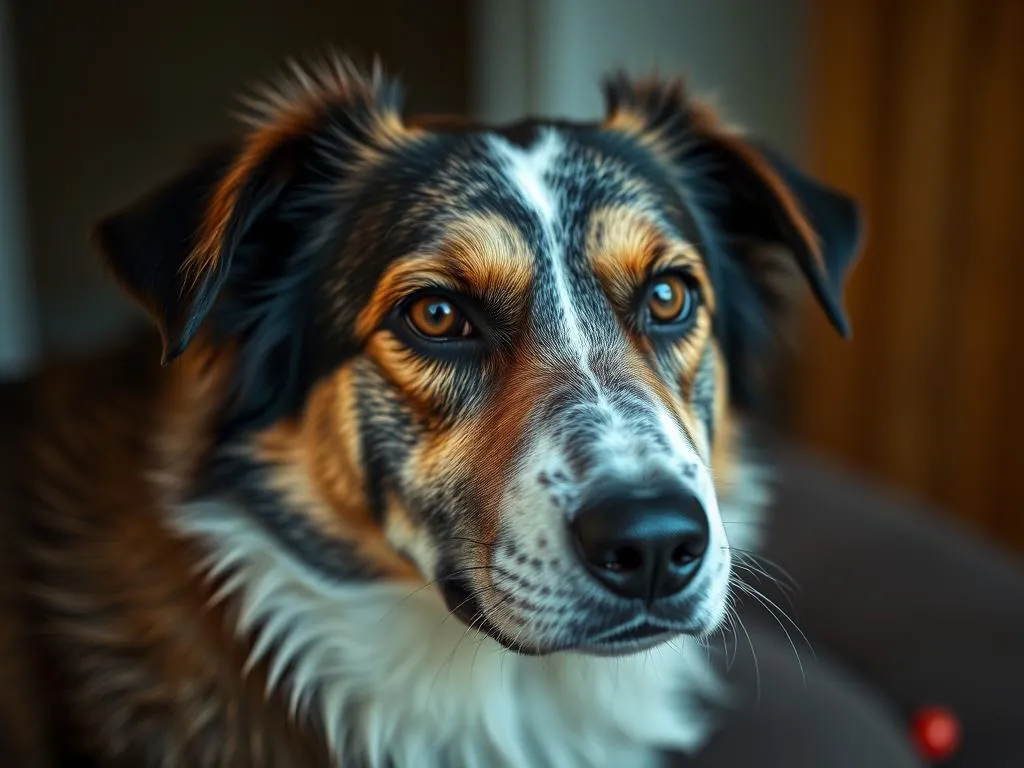
I. Introduction
Cynophobia is defined as an irrational and persistent fear of dogs. The term is derived from the Greek word “kynos,” meaning dog, and “phobos,” meaning fear. This phobia can lead to significant distress and avoidance behaviors in individuals who experience it.
Statistics indicate that cynophobia affects a notable portion of the population. Studies suggest that around 3-5% of people worldwide suffer from various forms of animal phobias, with cynophobia being one of the most common. Understanding this fear is crucial, not only for the individuals who experience it but also for society as a whole. By addressing cynophobia, we can foster a more compassionate environment for both dog owners and people who fear dogs.
II. Understanding Cynophobia
What is a Phobia?
A phobia is characterized as an intense, irrational fear of a specific object or situation that leads to significant distress and avoidance. Unlike general anxiety, phobias provoke an overwhelming reaction that can disrupt daily life. Individuals with cynophobia may go to great lengths to avoid situations where they might encounter dogs, leading to social isolation and anxiety.
Cynophobia vs. Other Animal Phobias
Cynophobia can be compared to other common animal phobias, such as arachnophobia (fear of spiders) or ophidiophobia (fear of snakes). While all these phobias share common features, such as irrational fear and avoidance, cynophobia is often more complex due to the domestication of dogs and their prevalence in society. Unlike spiders or snakes, dogs often interact with humans daily, making avoidance more challenging.
Symptoms of Cynophobia
Individuals with cynophobia may experience a variety of physical and emotional symptoms, including:
- Rapid heartbeat
- Sweating
- Trembling
- Nausea
- Dizziness
- Feelings of panic or dread
These symptoms can be triggered by merely seeing a dog, hearing barking, or even thinking about dogs. The fear experienced can be so intense that it leads to panic attacks in some cases.
Triggers of Cynophobia
Triggers for cynophobia can vary from person to person but commonly include:
- Actual encounters with aggressive or barking dogs
- Seeing images or videos of dogs
- Hearing stories about dog attacks
Understanding these triggers is essential for addressing the phobia and developing coping strategies.
III. Causes of Cynophobia
Genetic Factors
Research suggests that genetic predispositions may play a role in developing various phobias, including cynophobia. Individuals with a family history of anxiety disorders may be more susceptible to developing phobias, as certain traits can be inherited.
Environmental Factors
Environmental influences are significant contributors to the development of cynophobia. Negative experiences with dogs during childhood, such as being bitten or chased, can lead to long-lasting fears. Additionally, if a child grows up in an environment where dogs are perceived as dangerous, this fear can be ingrained.
Psychological Factors
The relationship between cynophobia and mental health is complex. Those with anxiety disorders or other mental health issues may be more likely to develop phobias. The heightened state of anxiety can lead to an exaggerated fear response when encountering dogs.
Cultural Influences
Cultural perceptions of dogs can also shape individual fears. In some cultures, dogs are viewed as protectors and companions, while in others, they may be seen as threats. Media portrayal of dogs, especially in horror movies or news stories about dog attacks, can further influence societal attitudes and individual fears.
IV. Impact of Cynophobia
Daily Life Implications
Cynophobia can significantly impact daily life. Individuals may avoid parks, neighborhoods, or activities where dogs are likely to be present. This avoidance can lead to limitations in social interactions, hobbies, and overall quality of life. Even events like family gatherings can become stressful if dogs are involved.
Mental Health Consequences
The implications of cynophobia extend beyond fear. Individuals may experience anxiety, depression, and low self-esteem due to their phobia. The constant stress of avoiding situations involving dogs can lead to chronic anxiety disorders or even agoraphobia, where individuals become fearful of leaving their homes.
Social Stigma
There is often a misunderstanding and stigma surrounding phobias, including cynophobia. People who do not understand the nature of phobias may dismiss the fear, leading to feelings of shame or embarrassment for those affected. This lack of understanding can hinder individuals from seeking help or support.
V. Coping Mechanisms and Treatments
Self-Help Strategies
Individuals struggling with cynophobia can employ several self-help strategies to manage their fear:
- Gradual Exposure: Slowly introducing oneself to dogs in a controlled and safe environment can help desensitize the fear response.
- Mindfulness: Practicing mindfulness techniques can aid in recognizing and controlling anxious thoughts when faced with the fear.
- Relaxation Techniques: Breathing exercises, meditation, and yoga can help manage physical symptoms of anxiety.
Professional Therapies
For those looking for more structured support, several therapeutic options can be effective in treating cynophobia:
- Cognitive Behavioral Therapy (CBT): This therapy aims to change negative thought patterns associated with fear, helping individuals reframe their beliefs about dogs.
- Exposure Therapy: Gradual exposure to the feared object—in this case, dogs—under the guidance of a therapist can help reduce fear over time.
Support Groups
Community support can be invaluable for individuals with cynophobia. Connecting with others who share similar experiences can provide comfort and encouragement. Support groups can also offer practical advice and coping strategies.
Medication
In some cases, medication may be prescribed to help manage symptoms. Antidepressants or anti-anxiety medications can reduce the intensity of fear and anxiety associated with cynophobia, allowing individuals to pursue therapy and exposure techniques more effectively.
VI. Preventing Cynophobia
Education and Awareness
Promoting education and awareness about dogs can significantly reduce the incidence of cynophobia. Providing information on dog behavior, training, and responsible ownership can help demystify dogs and alleviate fears.
Positive Experiences with Dogs
Encouraging safe, positive interactions with dogs from a young age can prevent the development of cynophobia. Programs that teach children how to approach and interact with dogs safely can foster a sense of comfort and reduce fear.
Community Programs
Local initiatives that promote responsible dog ownership and education can play a vital role in reducing fear. Events such as “meet the breed” days, dog training classes, and community outreach programs can create a more positive perception of dogs in society.
VII. Conclusion
In summary, cynophobia is a complex phobia that affects many individuals, causing significant distress and impacting daily life. Understanding its symptoms, causes, and effects is crucial for both those who suffer from it and society as a whole. Encouragement and support are essential for individuals dealing with this fear, as there are effective strategies and treatments available. By promoting education and positive experiences with dogs, we can work towards reducing the fear surrounding them and fostering a more understanding environment for everyone.









